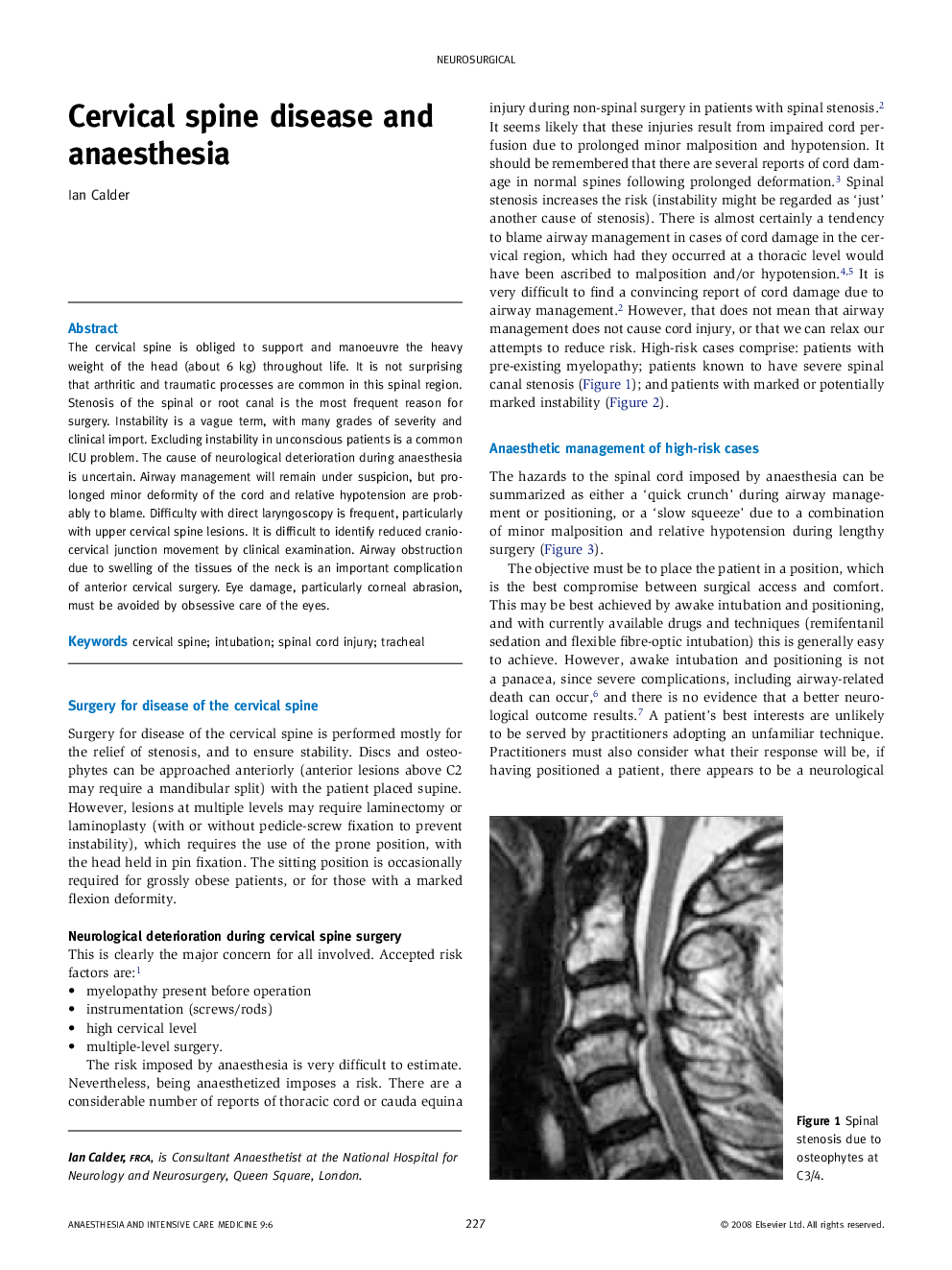| Article ID | Journal | Published Year | Pages | File Type |
|---|---|---|---|---|
| 2743525 | Anaesthesia & Intensive Care Medicine | 2008 | 4 Pages |
The cervical spine is obliged to support and manoeuvre the heavy weight of the head (about 6 kg) throughout life. It is not surprising that arthritic and traumatic processes are common in this spinal region. Stenosis of the spinal or root canal is the most frequent reason for surgery. Instability is a vague term, with many grades of severity and clinical import. Excluding instability in unconscious patients is a common ICU problem. The cause of neurological deterioration during anaesthesia is uncertain. Airway management will remain under suspicion, but prolonged minor deformity of the cord and relative hypotension are probably to blame. Difficulty with direct laryngoscopy is frequent, particularly with upper cervical spine lesions. It is difficult to identify reduced cranio-cervical junction movement by clinical examination. Airway obstruction due to swelling of the tissues of the neck is an important complication of anterior cervical surgery. Eye damage, particularly corneal abrasion, must be avoided by obsessive care of the eyes.
